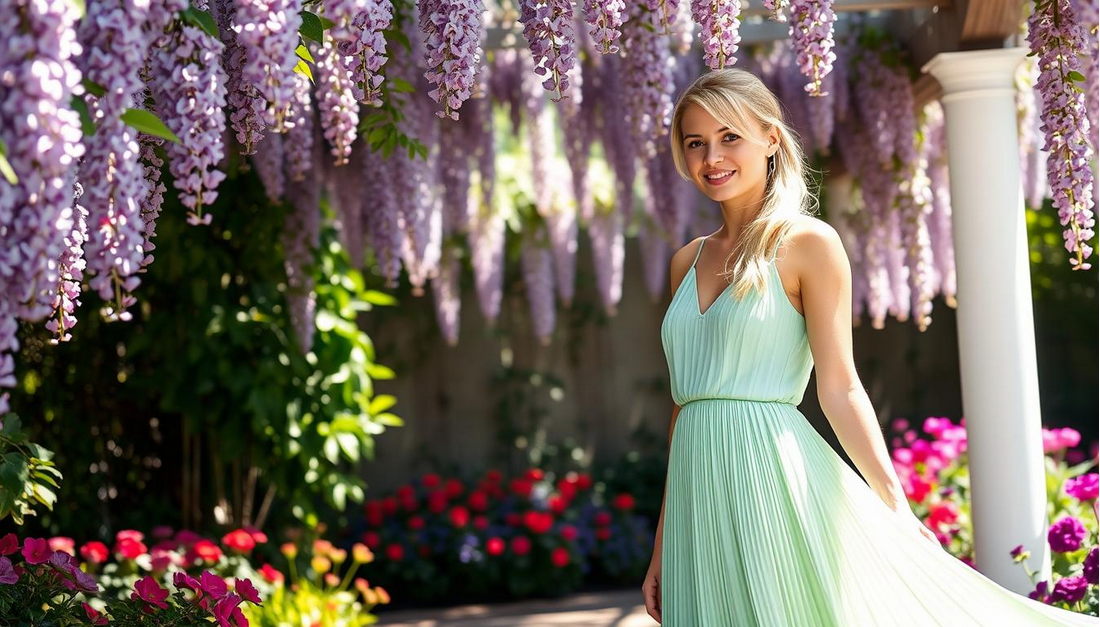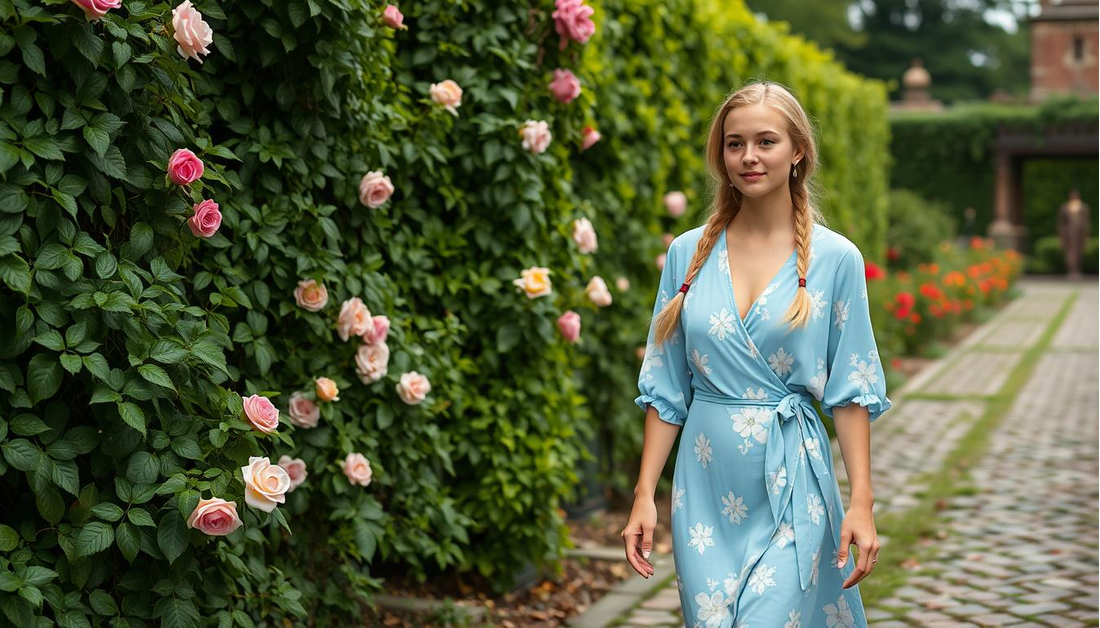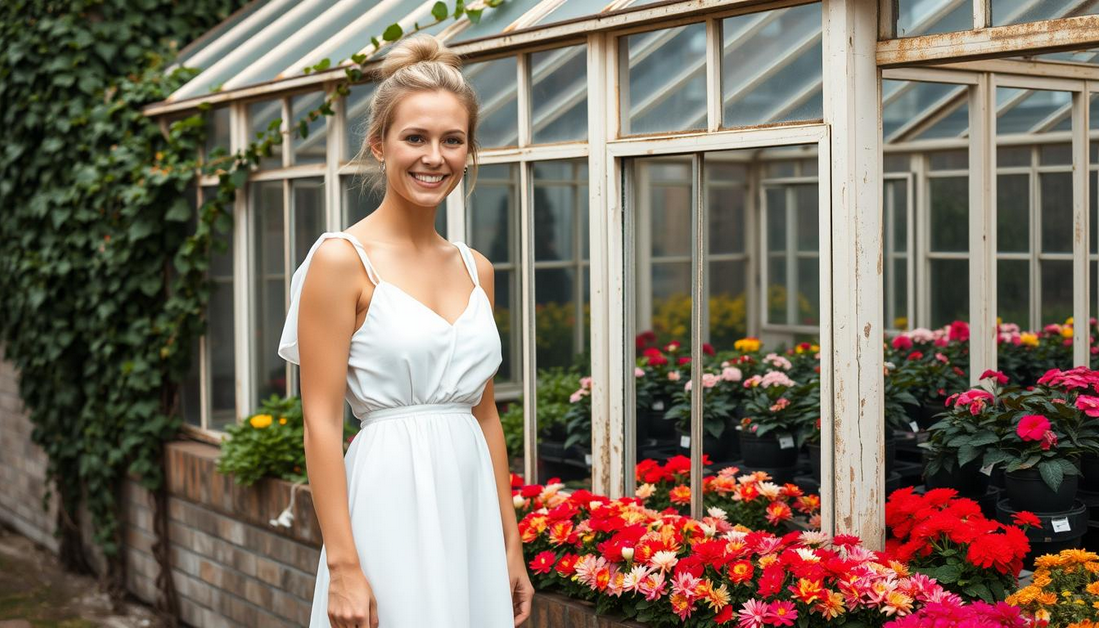India customers to view on amazon.in
St. Louis in Bloom: Garden Districts and Botanical Wonders
The city of St. Louis is renowned for its rich horticultural heritage, boasting numerous beautiful gardens that attract visitors from far and wide. With a deep-rooted history in gardening, St. Louis offers a unique blend of natural beauty and tranquility.
- The Verdant Legacy of St. Louis
- Missouri Botanical Garden: A World-Class Horticultural Haven
- Tower Grove Park and Surrounding Garden District
- Historical Significance and Design
- Pavilions and Garden Features
- Neighborhood Gardens and Green Spaces
- Forest Park: Urban Wilderness and Floral Displays
- St. Louis in Bloom: Garden Districts and Botanical Wonders Throughout the Seasons
- Spring Flowering Highlights
- Summer Garden Experiences
- Fall Foliage and Harvest Displays
- Winter Garden Beauty
- Historic Garden Districts: Lafayette Square and Beyond
- Lafayette Square’s Victorian Gardens
- Central West End Garden Features
- Compton Heights and Reservoir Park
- Shaw Nature Reserve and Native Landscapes
- Community Gardens and Urban Green Initiatives
- Gateway Greening Projects
- Urban Agriculture and Food Gardens
- Sustainable Practices in St. Louis Gardens
- Visitor’s Guide to St. Louis Garden Experiences
- Best Times to Visit and Seasonal Events
- Photography Hotspots and Instagram-Worthy Locations
- Accessibility Information and Family-Friendly Gardens
- Guided Tours and Educational Opportunities
- Conclusion: Embracing the Botanical Heritage of St. Louis
- FAQ
- What are the best gardens to visit in St. Louis?
- What are the opening hours for the Missouri Botanical Garden?
- Are there guided tours available at the gardens in St. Louis?
- Can I visit the gardens in St. Louis during the winter?
- Are the gardens in St. Louis suitable for families with young children?
- Can I take photographs in the gardens?
- Are there any community gardens in St. Louis that I can visit?
- What are the best times to visit the gardens in St. Louis?

From the esteemed Missouri Botanical Garden to the breathtaking Tower Grove Park, the city’s floral landscapes are a treat to behold. Whether you’re a nature enthusiast, a gardening aficionado, or simply seeking a peaceful escape, St. Louis has something to offer.
Key Takeaways
- Explore the Missouri Botanical Garden, one of the oldest and largest botanical gardens in the country.
- Discover the serene beauty of Tower Grove Park, adjacent to the Missouri Botanical Garden.
- Visit the charming garden districts that showcase St. Louis’s horticultural heritage.
- Enjoy the diverse flora and fauna in the city’s many gardens and green spaces.
- Experience the tranquility of the city’s botanical wonders.
The Verdant Legacy of St. Louis
The city’s verdant legacy is rooted in its historical development of garden culture, shaped by its distinct climate. St. Louis’s gardening history dates back to the 19th century, with early settlers bringing their horticultural practices and preferences to the region.
Historical Development of Garden Culture
The development of garden culture in St. Louis was influenced by its European settlers, who introduced new plant species and gardening techniques. Gardening became a staple of St. Louis culture, with many residents cultivating their own gardens. Key factors contributing to this culture include:
- Availability of fertile land and favorable climate conditions
- Influence of European gardening traditions
- Community sharing of gardening knowledge and practices
Climate and Growing Conditions
St. Louis’s climate is characterized by hot summers and cold winters, with a mix of continental and Mediterranean influences. This climate presents both opportunities and challenges for gardeners. Understanding the local climate and soil conditions is crucial for successful gardening in the area. Some key climate-related factors to consider include:
- Average frost dates and planting times
- Soil composition and nutrient management
- Watering strategies for extreme weather conditions

Missouri Botanical Garden: A World-Class Horticultural Haven
Since its inception in 1859, the Missouri Botanical Garden has been at the forefront of horticultural innovation and conservation. As one of the oldest and most respected botanical gardens in the country, it has evolved into a world-class horticultural haven, featuring over 79 acres of gardens, conservatories, and natural areas.
The Garden’s Rich History
The Missouri Botanical Garden was founded by Henry Shaw, a British-born entrepreneur who amassed a fortune in the St. Louis real estate market. Shaw’s vision for a botanical garden was influenced by his travels and the gardens he encountered. Upon his death, Shaw bequeathed his estate, including the garden, to the city of St. Louis, ensuring its continued growth and development as a public garden.
Notable Collections and Themed Gardens
The garden boasts an impressive array of plant species across its various themed gardens. The Japanese Garden, with its serene landscapes and tranquil water features, is a particular highlight. The English Woodland Garden showcases a diverse collection of trees, shrubs, and perennials in a naturalistic setting. Visitors can also explore the Children’s Garden, designed for interactive learning and play.

Climatron and Conservatories
A centerpiece of the Missouri Botanical Garden is the Climatron, a revolutionary geodesic dome conservatory that recreates tropical environments from around the world. The Climatron houses a vast collection of tropical plants, including orchids, bromeliads, and cacti. Additional conservatories feature plants from various climates, providing visitors with a unique opportunity to explore diverse ecosystems under one roof.
The Missouri Botanical Garden’s commitment to horticultural excellence, conservation, and education makes it a true horticultural paradise. Whether you’re a seasoned botanist or simply looking for a peaceful retreat, the garden offers something for everyone.
Tower Grove Park and Surrounding Garden District
Located in the heart of St. Louis, Tower Grove Park is a 289-acre oasis that showcases the city’s rich garden culture. This beautiful park, designed by landscape architect James Gurney, is a must-visit destination for anyone looking to experience the best of St. Louis’ gardens.
Historical Significance and Design
Tower Grove Park has a rich history, having been designed in the 19th century. Its historic design and beautiful landscapes make it a significant landmark in St. Louis. The park’s layout and features reflect the era’s architectural styles, providing a glimpse into the past.
Pavilions and Garden Features
The park is home to several stunning pavilions and garden features, including picturesque lakes and vibrant flower displays. Visitors can enjoy leisurely walks, picnics, and exploration of the various gardens. The park’s design ensures that there’s something for everyone to enjoy.

Neighborhood Gardens and Green Spaces
The area surrounding Tower Grove Park is characterized by charming neighborhood gardens and green spaces. These gardens not only add to the aesthetic appeal of the area but also provide residents with tranquil spots to relax and enjoy nature. The integration of these gardens with the park creates a seamless green experience.
Forest Park: Urban Wilderness and Floral Displays
Nestled in the heart of St. Louis, Forest Park is a sprawling oasis that offers a unique blend of urban wilderness and breathtaking floral displays. As one of the largest urban parks in the United States, it provides a diverse range of recreational activities, cultural attractions, and natural beauty.

Jewel Box Greenhouse
The Jewel Box Greenhouse is a highlight of Forest Park, renowned for its stunning floral displays and beautifully maintained gardens. This historic greenhouse hosts various flower shows throughout the year, showcasing a wide variety of plants and flowers. Visitors can enjoy the vibrant colors and delicate scents of the flora on display.
“The Jewel Box is a true gem in Forest Park, offering a tranquil escape from the hustle and bustle of city life.” – St. Louis Park Visitor
Seasonal Floral Displays
Forest Park is known for its seasonal floral displays, which change throughout the year to reflect the beauty of each season. From the vibrant blooms of spring to the festive decorations of winter, the park’s gardens are always a treat to behold. Visitors can enjoy the ever-changing landscapes and plan their visits according to the season’s highlights.
- Spring: Tulips and daffodils bloom in the park’s gardens.
- Summer: Vibrant flowers and lush greenery are on full display.
- Fall: The park’s foliage transforms into a kaleidoscope of autumn colors.
- Winter: Festive lights and decorations create a magical atmosphere.
Natural Areas and Waterways
In addition to its gardens, Forest Park features extensive natural areas and waterways. The park’s lakes, forests, and walking trails provide a peaceful escape for visitors. The natural beauty of the park is a perfect setting for a leisurely stroll, a picnic, or a more adventurous outing.
| Feature | Description |
|---|---|
| Jewel Box Greenhouse | Historic greenhouse with stunning floral displays |
| Seasonal Floral Displays | Ever-changing gardens reflecting the beauty of each season |
| Natural Areas and Waterways | Lakes, forests, and walking trails for a peaceful escape |
St. Louis in Bloom: Garden Districts and Botanical Wonders Throughout the Seasons
As the seasons change, St. Louis transforms into a vibrant tapestry of garden districts and botanical wonders. The city’s gardens are a reflection of its rich horticultural heritage, with each season bringing its own unique charm and beauty.
Spring Flowering Highlights
Spring is a time of renewal in St. Louis, with gardens bursting into bloom. The Missouri Botanical Garden is a must-visit, featuring over 6,500 types of plants, including tulips, daffodils, and cherry blossoms. The garden’s Climatron is particularly stunning, with a tropical environment that’s perfect for escaping the chill of early spring.
- Tulips and daffodils bloom in the garden’s main areas
- Cherry blossoms add a touch of pink to the landscape
- The Climatron features a tropical environment with exotic plants
Summer Garden Experiences
Summer is peak garden season in St. Louis, with warm weather bringing lush greenery and vibrant flowers. Tower Grove Park is a highlight, with its beautiful pavilions and garden features. Visitors can enjoy the park’s many walking trails, picnic areas, and outdoor concerts.

Fall Foliage and Harvest Displays
Autumn brings a kaleidoscope of color to St. Louis’s gardens, with the changing leaves of the trees and the harvest displays. The Missouri Botanical Garden once again takes center stage, with its fall flower display and seasonal exhibits.
Winter Garden Beauty
Even in the winter, St. Louis’s gardens have a quiet beauty. The Jewel Box Greenhouse in Forest Park is a winter wonderland, with its tropical plants and festive decorations. Visitors can also enjoy the park’s natural areas and waterways, which take on a serene quality in the snow.
Historic Garden Districts: Lafayette Square and Beyond
Exploring St. Louis’ historic garden districts reveals a blend of architectural and botanical heritage. These districts are not only visually stunning but also rich in history and culture.

Lafayette Square’s Victorian Gardens
Lafayette Square is one of St. Louis’ oldest and most historic neighborhoods, known for its beautifully maintained Victorian-era gardens. The district’s gardeners take great pride in their lush, vibrant gardens, often featuring a mix of flowers, shrubs, and trees. Visitors can stroll through the square and admire the intricate garden designs, which reflect the elegance of the Victorian era.
Central West End Garden Features
The Central West End is another St. Louis neighborhood renowned for its beautiful gardens. The area is characterized by grand estates and beautifully manicured lawns, often adorned with ornate fountains and statuary. Many of the gardens in this district are designed to complement the architectural style of the homes, creating a harmonious balance between nature and architecture.
Compton Heights and Reservoir Park
Compton Heights is a charming neighborhood with a rich history, featuring some of St. Louis’ most beautiful and historic gardens. Reservoir Park, located within the neighborhood, offers a serene escape with its walking trails and scenic views. The park’s gardens are meticulously maintained, providing a picturesque setting for relaxation and recreation.
| Garden District | Notable Features | Garden Style |
|---|---|---|
| Lafayette Square | Victorian-era gardens, lush flowers | Formal, intricate designs |
| Central West End | Grand estates, ornate fountains | Elegant, manicured lawns |
| Compton Heights | Historic homes, Reservoir Park | Traditional, serene landscapes |
Shaw Nature Reserve and Native Landscapes
Spanning over 1,200 acres, the Shaw Nature Reserve is a testament to the beauty and diversity of native landscapes. Located just outside St. Louis, this nature preserve is a haven for those interested in exploring Missouri’s natural flora and fauna.

The reserve is characterized by its diverse range of natural habitats, including forests, grasslands, and wetlands. These varied ecosystems support a wide array of plant and animal species, making the Shaw Nature Reserve a significant site for both conservation and education.
Ecological Restoration and Conservation
Ecological restoration is a key focus at the Shaw Nature Reserve. Efforts are made to restore and maintain the natural balance of the ecosystems within the reserve. This includes the removal of invasive species, reintroduction of native plants, and management of wildlife habitats. These conservation efforts not only enhance biodiversity but also provide a healthier environment for both wildlife and visitors.
Conservation initiatives at the reserve are multifaceted, involving both the local community and professional conservationists. By working together, the reserve is able to maintain its natural beauty and ecological integrity for future generations.
Trails and Natural Habitats
The Shaw Nature Reserve offers a variety of trails that allow visitors to explore its natural habitats. From the tranquil forests to the vibrant wildflower displays in the grasslands, the reserve’s trails provide a unique opportunity to experience Missouri’s natural landscapes up close.
Visitors can enjoy leisurely walks or more challenging hikes, depending on their preference. The trails are designed to be accessible, making the reserve a suitable destination for families and individuals of all ages.
The diverse natural habitats within the reserve support a wide range of wildlife. From birds and butterflies to deer and other wildlife, the Shaw Nature Reserve is a place where visitors can observe nature in its unspoiled state.
Community Gardens and Urban Green Initiatives
St. Louis is embracing a greener future through its vibrant community gardens and urban agriculture initiatives. These projects not only beautify the urban landscape but also foster community engagement and promote sustainable living practices.
Gateway Greening Projects
Gateway Greening is a pivotal organization in St. Louis, working tirelessly to transform urban spaces into thriving green areas. Through their efforts, numerous community gardens have been established, providing residents with opportunities to grow their own food and connect with nature. Gateway Greening’s initiatives have been instrumental in promoting urban sustainability.
Urban Agriculture and Food Gardens
Urban agriculture is on the rise in St. Louis, with many residents participating in food gardening projects. These initiatives not only provide fresh produce but also serve as educational hubs, teaching sustainable gardening practices. Urban agriculture is playing a crucial role in enhancing food security and community cohesion.
Sustainable Practices in St. Louis Gardens
Sustainability is at the heart of St. Louis’s community gardens. Practices such as rainwater harvesting, composting, and organic gardening are being adopted, reducing the environmental footprint of these green spaces. By embracing sustainable practices, St. Louis’s gardens are becoming models for eco-friendly urban development.

Visitor’s Guide to St. Louis Garden Experiences
From lush botanical gardens to serene parklands, St. Louis offers a unique blend of natural beauty and horticultural excellence. Whether you’re a nature enthusiast, a photography buff, or simply looking for a peaceful retreat, St. Louis gardens are a must-visit destination.
Best Times to Visit and Seasonal Events
The best time to visit St. Louis gardens is during the spring and fall seasons when the weather is mild and the flora is in full bloom. Spring brings vibrant tulips and daffodils, while fall foliage paints the landscape with warm hues. Seasonal events like the Missouri Botanical Garden’s Japanese Festival and the St. Louis Flower and Garden Show are not to be missed.
Photography Hotspots and Instagram-Worthy Locations
St. Louis gardens are a photographer’s paradise, with numerous Instagram-worthy spots waiting to be captured. The Climatron at the Missouri Botanical Garden, with its tropical plants and unique dome structure, is a must-visit. Tower Grove Park and Forest Park also offer picturesque landscapes and floral displays perfect for photography.
Accessibility Information and Family-Friendly Gardens
Many St. Louis gardens are designed with accessibility in mind, offering paved paths and wheelchair-accessible facilities. The Missouri Botanical Garden, for example, has a comprehensive accessibility guide on its website. Family-friendly gardens like the St. Louis Children’s Garden provide interactive and educational experiences for kids.
Guided Tours and Educational Opportunities
To enhance your garden experience, consider joining a guided tour or participating in one of the many educational programs available. The Missouri Botanical Garden offers guided tours and workshops on horticulture and gardening techniques. Tower Grove Park also hosts various events and classes throughout the year.
By planning your visit according to the seasonal events and taking advantage of the guided tours and educational opportunities, you can make the most of your St. Louis garden experiences.
Conclusion: Embracing the Botanical Heritage of St. Louis
St. Louis is a city deeply rooted in its botanical heritage, boasting a rich history of gardening and horticulture. The city’s horticultural paradise status is evident in its numerous gardens and green spaces, from the renowned Missouri Botanical Garden to community gardens and urban green initiatives.
These St. Louis gardens not only promote beauty but also foster sustainability and community engagement. As explored in this article, the city’s commitment to its botanical heritage is evident in its many garden districts, including Lafayette Square and the Shaw Nature Reserve.
Visitors can experience the city’s horticultural wonders throughout the seasons, with spring flowering highlights, summer garden experiences, and fall foliage displays. Whether you’re a gardening enthusiast or simply looking for a peaceful escape, St. Louis is a destination that has something to offer everyone.
By embracing its botanical heritage, St. Louis continues to inspire a love of nature and gardening in its residents and visitors alike, making it a truly unique horticultural paradise.
FAQ
What are the best gardens to visit in St. Louis?
St. Louis is home to many beautiful gardens, including the Missouri Botanical Garden, Tower Grove Park, and Forest Park. These gardens offer a range of experiences, from tropical conservatories to vibrant floral displays and natural areas.
What are the opening hours for the Missouri Botanical Garden?
The Missouri Botanical Garden is open daily from 9am to 5pm, with extended hours during peak season. It’s best to check the garden’s website for the most up-to-date information on hours and admission.
Are there guided tours available at the gardens in St. Louis?
Yes, many of the gardens in St. Louis offer guided tours, including the Missouri Botanical Garden and Tower Grove Park. These tours can provide a deeper understanding of the gardens’ history, design, and plant collections.
Can I visit the gardens in St. Louis during the winter?
Yes, many of the gardens in St. Louis are open year-round, although some may have limited hours or closures during extreme weather conditions. The Missouri Botanical Garden, for example, offers a range of winter activities, including holiday lights and festive displays.
Are the gardens in St. Louis suitable for families with young children?
Yes, many of the gardens in St. Louis are family-friendly, with activities and attractions suitable for children. The Missouri Botanical Garden, for example, offers a children’s garden and a range of family-friendly events throughout the year.
Can I take photographs in the gardens?
Yes, photography is generally allowed in the gardens, although some areas may be restricted due to sensitive plant collections or special events. It’s always a good idea to check with garden staff before taking photos, especially if you’re planning to use your images for commercial purposes.
Are there any community gardens in St. Louis that I can visit?
Yes, St. Louis has a thriving community garden scene, with many gardens located throughout the city. These gardens offer a range of opportunities for gardening, education, and community engagement.
What are the best times to visit the gardens in St. Louis?
The best times to visit the gardens in St. Louis depend on your interests and preferences. Spring is a great time to see blooming flowers, while summer offers warm weather and lush foliage. Autumn brings vibrant fall colors, and winter offers a serene and peaceful atmosphere.







